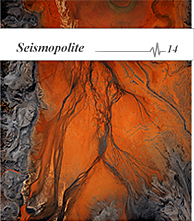June 1, 2016
Reset Modernity! By Bruno Latour at the ZKM
ZKM Center for Art and Media, Karlsruhe, Germany
Written by Mylène Ferrand Lointier
The ZKM in Karlsruhe, Germany, has proposed several interesting reflections on the questions posed by the climate change, political ecology and its relation to art. Take, for instance, the invitation made to anthropologist, philosopher and sociologist Bruno Latour, who has been working on these questions for years, and who has conceived the exhibition Reset Modernity! with Martin Guinard-Terrin, Christophe Leclercq and Donato Ricci. At the moment of environmental change and of “facing Gaia”, their proposition envisages a recalibration of the instruments through which we relate to the world, and that provided the moderns with their fundamental cartography. Take, also, the exhibition next door, curated by Yuko Hasegawa: New Sensorium, Exiting from Failures of Modernization moves ahead on a completely different track.
“Let’s go!” exclaims Bruno Latour during a visit to his exhibition. Latour is literally someone who created a new school of thought where people of very diverse horizons gather their efforts of innovation and meet to find new resources. To the ZKM, Latour brought with him his entire team and his friend artists, multiple voices of opinion and intervention, as well as his students at SPEAP Paris (Science Po Experimentation in Arts and Politics) to create a laboratory, a sort of experimental research platform. The visitor is never idle, having to follow the direction taken by six research sections that also represent six different procedures: “Relocalizing the global”; “Without the world or within”; “Sharing responsibility: A farewell to the sublime”; “From lands to disputed territories”; “Secular at last!” and “Innovation, not hype”. Here, instead of information boards, a “field book” - a term borrowed from the natural sciences where it is a tool of investigation of the terrain – provides the instructions. Each work in the exhibition is inscribed according to a rational logic of Cartesian coordinates, with abscissa and ordinate. A “station” provides documentation related to the procedure one is situated in, a kind of “table of disorientation”. However, it is difficult to lose oneself, and that is in spite of all the points of orientation – ecological, social, economic, ethic – that are perfectly out of tune with each other; so consequent are indeed all the means employed to reorient the visitor. And if we measure the success of an exhibition by the time spent on it, then the success of Reset Modernity! is clear. During its inauguration, a workshop made the participants deal with the ensemble of themes to try to reinscribe the exhibition, everyone becoming an experimenting fellow and researcher, each with an ownership to the problems posed and able to engage in making solutions. Several discussions, horizontal “parliaments of things” followed subsequently over the experience gained. The idea is to commit oneself to a “thought experiment”, a common scientific practice, which is supposed to transform itself into a “thought exhibition”. Hence, the curatorial project for Reset Modernity! consists in providing access to a new level of knowledge.
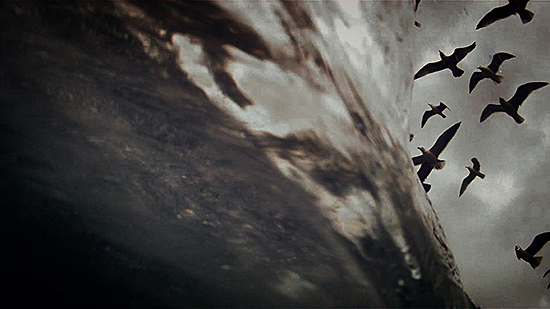
Bruno Latour and Peter Weibel, who has been the director of the ZKM since 1999, term this “thought exhibition” a “Gedankenausstellung”. The Beautiful is no longer the interest of art; instead, Weibel reminds us, the media are. He attributes the discursive form of exhibition to Charles Baudelaire and to the 1900, who spoke of the Nazareans who committed the “error of philosophical art”, “the pretention in fine arts to be able to take the place of books, that is, of a rivalry with the art of book printing in teaching history, morals and philosophy”. Similarly, Documenta has often been criticized for not displaying art; for being too close to sociology, philosophy and politics... Inversely, for Latour, to write a book, make an exhibition or conceive a piece of theater are identical undertakings. The different media are at the same level. Thus, the earlier thought experiments led Latour and Weibel to a particular type of exhibition, not dedicated to conceptual art, but instead a presentation of a new assemblage of productions and experiences. To Weibel, Habermas’ statement about how the public has become consumers of art and culture after the transformation of the public sphere,[1] is fundamental. On that basis, should the institutions take part in the act of consuming or rather become, once again, sites of reason and reflection on art and culture? According to Weibel, there is no longer any other forum in which it is possible to create a public democratic sphere, than art. The representation of what democracy could be, can only be expressed through an exhibition. Hence, the museum should not strive to attain consensus, but rather divergence, in view of promoting democratic space – contrary to the media that pursue the common denominator. According to Weibel, if there are no alternatives to the existing world, we need to change the system, and the exhibition shows us precisely how to modify it.
Reset Modernity! starts off with a projection of the video by Pauline Julier, after (2012). The tone is given. A strange atmosphere of emptiness rules, on the background of sacred music, inspiring a sensation that for the post-moderns, the party is over. Will the heavens, then, fall on our heads? What is there to expect of the gods, of the providence from the era of the Great Acceleration, from the upheavals induced by the humans before us and by the moderns? The heritage that our absent parents left us is nothing less than the Anthropocene, the entire weight and fate of the world, a responsibility heavy with consequences. Further away, Tout monument est une quarantaine [Any single monument is a quarantine] (Minamisōma – Fukushima District – Japan) by Fabien Giraud (2012-2014) at first glance appears to be an enigma. The small, dark photograph hanging on a large, white wall, in fact represents a pile of irradiated soil from the forest of Fukushima. The paper on which the photograph is printed was actually used as a support for the soil during the photo shoot; it is therefore radioactive, and potentially dangerous for anyone who would touch it. A memory of the nuclear accident whose catastrophic repercussions are still ongoing, and will be so for several generations: this possible monument of the Anthropocene is not separated from the event it talks about – it does not mark its end. This Quarantine, normally the temporal break between the commemorative object and the commemorated subject, is just as paradoxical as the Anthropocene itself.
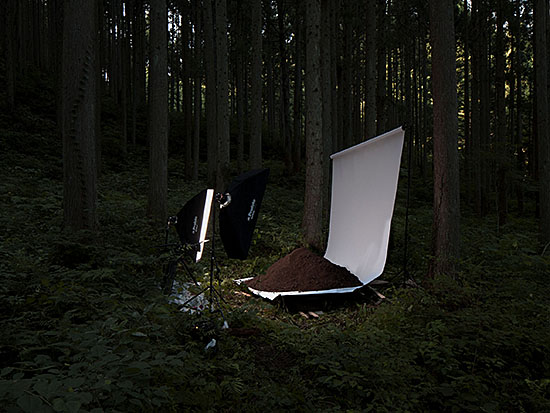
Precisely the nuclear is one of the possible stratigraphic markers that could define the start of the Anthropocene, this era on the geological time scale that is not yet officially recognized by the scientific committee in charge of its scrutiny. Certain commentators evoke the extreme vanity of believing that the human race has the right to intervene on earth. James Lovelock’s perspective is that Gaia, when the moment comes, will evacuate the human being. The fear of a hostile, untamed and superior nature that we find in the romanticism of for example Caspar David Friedrich, resonates in the work Quatemary (2014) by Tacita Dean. The five photo engravings form a lunar, post-apocalyptic landscape, constructed by the artist as a reference to the Yellowstone National Park. In a documentary that the artist had seen, it was said that the crater could go into eruption at any moment and sweep out parts of the United States. A dense cloud of ash, capable of hiding the sun, would cause the extinction of humans and other beings.
The human being seems equally small and humble in the film Powers of Ten: a film dealing with the relative size of things in the universe and the effect of adding another zero (1977) by Charles and Ray Eames. This famous work starts with a take from above, at the distance of one meter, of a couple relaxing after a picnic on the shore of Lake Michigan. Every ten seconds, the camera operates by travelling backwards ten times further away, sliding the framing to include outer space, the galaxy, what is infinitely large, to the point of suspense. After this, the speed slows down, and the perspective returns to the level of the human hand, to slow down once more and penetrate its tissues to the infinitely small, 10 to the power of 18. The return to the image of the picnic blanket closes this vertiginous feedback loop. From up there, at 10 to the power of 25 times the initial and familiar view of the couple in the grass, the world of earthlings, human and non-human, appears like stardust lost in the infinity of the cosmos. Is the earth an exception? Are there other forms of life other places on our planet? Considering the unprecedented ecological crisis on earth, is there an emergency exit for its inhabitants? According to Latour, using Peter Sloterdijk’s[2] term, we are “monogeist”, we only have one earth, and find ourselves stuck in between our ideas and our lost utopias: On the one hand, we have a limited globe perceived as a never-ending resource; on the other, the earth on which miserable peasants got lost in a dead-end trail. To Latour, it is a better option to reset one’s feet on the ground instead of trying to escape; to enter a pacifist pact with Gaia – this new and unknown entity. By the way, the biocentric and ecocentric theses recognize that Gaia – with its living beings and ecosystems – has a moral value in and for itself, regardless of human needs and desires. Hence, to be able to elaborate this “New Climatic Regime”, a change of perspective and perception is necessary, and to reinitialize our tools and scientific and technological filters.
What does for instance a global vision mean from a scientific point of view? Powers of Ten demonstrates how a multitude of images put together, border to border, gives a general vision that will always be an illusion because each and every vision always is situated (Donna Haraway), local, and with its own specific properties. In his Manifeste compositioniste, Latour writes : “The common world does not exist, and never has existed. Pluralism is here to stay with us forever. A pluralism of cultures, yes, of ideologies, opinions, feelings, religions, passions, but also a pluralism of natures, of relations with the living and material worlds, and also with the spiritual worlds. No final answer is possible about what the world is composed of, about its present, past and future inhabitants. The incommensurabilities are not superficial and ephemeral, due to pedagogical or communicative errors; rather, they are fundamental. They bite onto cultures and natures, onto metaphysical practices that are alive, active and experienced. […] The universe is a pluriverse ([William] James). […] We have a world, a pluriverse to compose, and to confront it, we have about three or four passions, two or three reactions, five or six automatized feelings, a few indignations, a very small number of conditioned reflexes, a few really thoughtful attitudes, a handful of ready-made criticism. On the one hand, a multitude, on the other, four or five concepts. And one saw oneself capable of composing the former with the latter! Without any quest and without a work – without any new work, without taking everything fresh from the beginning, yet we know very well that the only way possible to compose a common world, would be to recompose it, to start over again the movement of composition from its very beginning.”[3]
![Robert Bresson, The Trial of Joan of Arc [Procès de Jeanne d’Arc],1962 Film still © Robert Bresson out of: Jean-Michel Frodon and Agnès Devictor, Religious Films Are Always Political, 2016 Film installation with 16 excerpts of 13 movies. Robert Bresson, The Trial of Joan of Arc [Procès de Jeanne d’Arc],1962 Film still © Robert Bresson out of: Jean-Michel Frodon and Agnès Devictor, Religious Films Are Always Political, 2016 Film installation with 16 excerpts of 13 movies.](http://seismopolite.com/images/stories/no14/2016-reset-modernity-jean-michel-frodon-religious-films-are-always-political-006.jpg)
This idea is very different from the thematic of “Globale” that was open at the ZKM for 300 days in 2015 at the occasion of Karlsruhe’s 300th anniversary. The art center which was created in 1989 and officially inaugurated in 1997, is an industrial complex fractioned into large halls, constructed between 1915 and 1918, and served as an arms and munitions factory to the Third Reich, until the very end of WW2. The epitome of the horrors of the 20th century is maybe the chant of the swan of modernity. Weibel wishes to remind us of the link between technological and military history. The old factory that today has become a site of culture, creation, art and freedom, dedicated to new media, was called an “Electronic or Digital Art Bauhaus” by its founder and first director, the art historian Heinrich Klotz. In the same way Latour closes the circle by evoking military history in his reflections on the climate; the exhibition represents a transition from “technology as objet, to technology as project”, connecting it to “care” and innovation – a new, acceptable horizon.
This is how Globale ended with Reset Modernity! and the two closely connected modules by Armin Linke and Territorial Agency. In The Appearance of that which cannot be seen (2016), researchers, theoreticians, anthropologists, selected and commented a few of Linke’s works from a total of more than 500,000. For longer than 20 years he has photographed the effects of globalization, the human industries and creations that challenge “nature”. The organization Territorial Agency shows Museum of Oil (2016) in collaboration with Greenpeace. This is a huge project presenting, in the form of five immense, bending signposts, Google Earth-maps over the extractions of petrol globally. Geopolitical agendas and wars also interfere both over and under the ground. However, to be able to understand the complexity and all forms of life inside the soil, it would be reasonable to watch them “from below” and not only “from above”. Otherwise, as we know from this moment on, we need to stay below an 80% extraction of fossile energy to keep below an increase of 2°C temperature before 2050. Thus, Territorial Agency proposes a vision of the future where the history of dependency on petrol has ended up in the museum, as a passed fact. The reality is unfortunately completely different, and a work by Bureau d’Etudes has eccoed this fact since Reset Modernity! This duo, Léonore Bonaccini and Xavier Fourt, makes cartographies of territories in the fight for political, social and economic power. Die Eroberung des Hohen Nordens. Geopolitik des Energie - und Bergbau-Ressourcen [The Conquest of the High-North. Geopolitics of energy and mining industry resources] (2009) makes visible the issues of conflict that are overlap in the Arctic; climate change, new roads and the exploitation of resources. In the same way, Ahmet Ögüt highlights a form of territorial resistance with his series of models of “nail houses”, mostly Chinese. Pleasure Places of All Kinds (2014) illustrates obstructions against the strategies of appropriation of the earth; the confrontation between public and private space appears in all its absurdity.
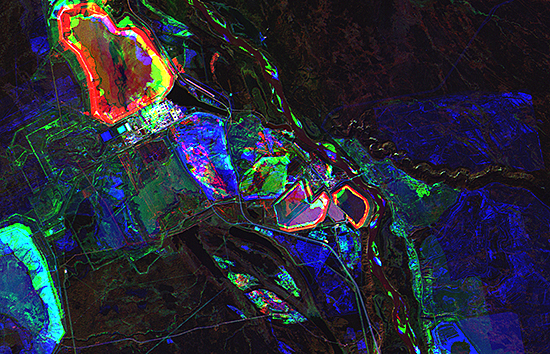
Geographic representations of space have always influenced ways of thinking. There are abounding examples of this, from Ptolemaios who, around year 150, would only include populated regions (the oecumene) in his representations, to the T-O-map of the middle ages, including three continents (Europe, Africa and Asia), to the Dymaxion map created by Richard Buckminster Fuller in 1954, with no top or bottom. Otherwise, until quite recently, the “Blue Marble”, a photograph taken by Apollo 17 on December 17 1972, was the most widespread view of the earth. This was the first image of our planet entirely lit up by the sun – seen from space, parts of the earth remain in shadow most of the time. The impact of the visualizations of the world on philosophic, political and aesthetic reflection is decisive, making and reflecting the history of an era. The work by Eames, Powers of Ten is a perfect example of this, considering the fact that it has been heavily used as a reference, object lesson and educational tool in the United States and Europe since the end of the 1970s. Superpowers of Ten (2013-2016), a theatrical performance by Andrés Jaque and the collective he created in 2003, The Office for Political Innovation, was a 43 minute-long reenactment of the Eames’ film. In a mise-en-scène in four acts, scenes and a number of tableaux, the theater piece shows interest in everything that the film does not say, pointing to the historical, social, political and economic events related to Powers of Ten. The team of actors comes alive, with much fanfare during the performance and releases the scenography to the sound of the pop hits by Queen (“I want to break free”), The Smiths (“Meat is murder”) and Cyndi Lauper (“I see your true colors”). It’s a festival of joyful grotesque, tinkered requisites, visual and scenic craft and curiosa, carnival utensils, sort of papier mâché-prosthesis that have the taste for undisclosed artifice in common with baroque theater. In the meantime, here, a counter-story inspired by activism and agitated banners is a means of protest, but also of speech bubbles and of a textual red thread in this grandiose, vibrant and burlesque comic strip. It is as much a question of visibility as of invisibility, one of ideologies that govern the unconscious, as well as consciousnesses. We also learn that the narrator of Powers of Ten, the scientist Philip Morrison, was a man in a wheelchair and that he worked for a plutonium production site that delivered the bomb that was dropped on Hiroshima. After that he became a fervent opponent to atomic weapons. And then, Chicago, the starting point of the Eames’ narrative, is also the city of the old Union Stock Yards that were inaugurated in 1865, and where 400 million animals were killed only in the period between 1865 and 1900. The Union Stock Yards became the model of a terrible machine of death and industrialization of the living, that was described in Upton Sinclair’s book The Jungle (1906). From then on, this sinister engineership has unstoppably propagated throughout the world, accelerating its decadence. Somewhere else, by the way, the historian Charles Patterson also describes the connection between the slaughterhouse, Fordism and the extermination methods of the nazis.[4]
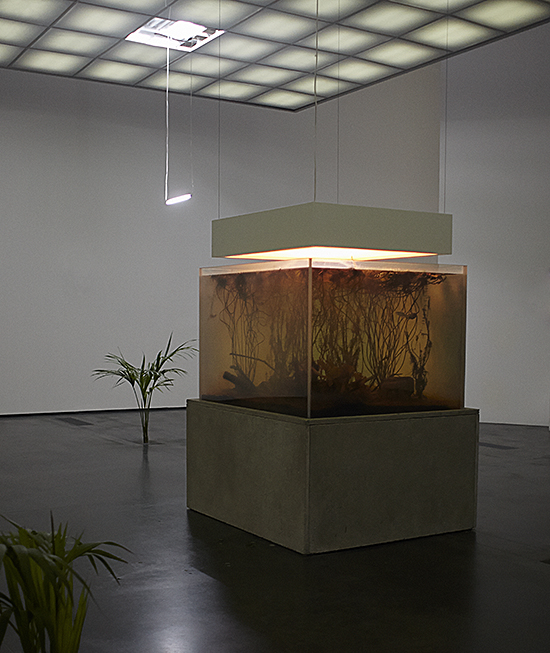
Notably, too, Lake Michigan, on the shores of which the couple enjoys their picnic without any worries in the Eames’ film, received permanent contamination through this very activity. “Be vegan” is a slogan we find written on one of the requisites in this re-enactment, or as said by the voice-over, “Veganism provides an alternative to the centrality of speciesism and anthropocentrism making way for a cosmopolitical sentiocentrism, that recognizes the rights of all sentient beings (Recarte Vicente-Arche)”.[5] Furthermore, the returning zoom that falls on the hand of the slumbering man gives us a pretext to interrogate the latent androcentrism of the film and the masculin hegemony over the feminine. Other, more subversive and socially just narratives exist. And Superpowers of Ten strives to repair the gaps of history, which is principally written by men, for and about themselves.[6] It could be added to this that the men in question are mostly white, heterosexual representatives of the European or western culture. “There won’t be a revolution unless it’s a feminist revolution.”, “There won’t be a revolution unless it’s a queer revolution.”, “There won’t be a revolution unless it is a transgender revolution.”, these are the phrases that the voice-over sings during the performance, and that were heard during the protests of the Movimiento 15-M in Madrid. Thus, the piece proposes “to think of reality as a series of webs of associated agencies, of diverse natures, which only get to happen in the performance of their associations.”[7]
In another part of the ZKM, the exhibition by Yuko Hasegawa addresses the urgency of the climate questions under a completely different angle. The muffling installation Transmission loss (2016) by Magdi Mostafa bears witness to this moment where a bug makes all the apparatuses and instruments disconnect simultaneously, and where the bug’s sound makes it impossible to regain one’s spirits. In the entrance, the emblematic installation Force (2015) by Kohei Nawa displays a sort of gigantic, water-filled, drewling barcode. This very aestheticized work uses the black liquid as its basic matter, making this black viscous substance fall into an equally black basin. Are we talking about oil or black rain evoking a nuclear catastrophe? The work is hypnotic. Using one’s senses to explore new types of relation to the world, is another path followed by the curator and the selected artists. Within (2012-ongoing) an installation, workshop and performance by Tarek Ataoui, has also been reactivated at the ZKM. The artist’s idea is use sound to open one’s senses, as he presents two new instruments, Square drum and SubBassProtoTon (an organ that is possible to enter) for both the hearing and the hearing impaired. The exhibition is constructed around four themes: “New media ecologies in the post-internet condition”; “New forms of mediality”, “Materiality and cognition in infospheres”; “Objects and alternative futures” and “Experiments in organics”. It does not leave any concrete answers (except perhaps for the work by Ataoui) but rather utopian, poetic escape routes, living, yet inexperienced environments, innovative ecosystems to survive the multiple crises that besiege our current era.
The exhibition New Sensorium, Exiting from Failures of Modernization thematizes modernism and its reefs and is a critique of ethnocentrism. It also assembles into the exhibition a majority of Asian, and otherwise non-occidental, artists. For example, Sputniko! uses new technologies to question feminisms. In The Moonwalk Machine – Selena’s Step (2013) a young geek (Selena) dreams about becoming the first woman to leave an imprint on the moon and create a machine that is specially adapted to her high heels. If the feminist Shulamith Firestone considered technology to be at the service of the emancipation of women, Sputniko! for her part points out the absurdity of certain inventions. By the way, despite the scientific and technological advances, women still bleed once per month. Menstruation Machine – Takashi’s Take (2010) is an apparatus simulating the pain and bleeding taking place during 5 days, giving everybody the ability to enter the skin of a woman during her period. The video which demonstrates the machine, shows a transvestite man going through the experience. After this, Yuko Hasegawa seizes the subject through the bias of the human being who is today totally mixed up with the non-human of the new technologies; the robots and the machines, evoking the animism of Actor-Network Theory. The work by Shiro Takatani, Toposcan / Baden-Württemberg (2016) simulates a non-human vision where time becomes manifest through movement and sedimentation. It is no longer a question of reinitializing scientific instruments or artefacts, but of tools that are so much infiltrated into the body, its conditions and fate, that the human becomes a hybrid, a cyborg. The physical, emotional and digital thus form the basis of the future human. In his performance Upload a new mind to the body (2016), dancer and actor Mirai Moriyama behaves like a creature in its moult, wishing to get rid of the superfluous, of dead skin, and retiring from former constraints. A performance in the guise of a conclusion that may be promising?
Mylène Ferrand Lointier is an art historian graduated from University Paris-Sorbonne. She was notably director of Les Moulins, the philanthropic project of Galleria Continua. She is now doing a PhD research on contemporary art and contributes to different medias.
Reset Modernity! is open until August 21, 2016, and New Sensorium, Exiting from Failures of Modernization until September 4, 2016 at the ZKM, Center for Art and Media, Lorenzstraße 19, 76135 Karlsruhe, Germany. The exhibition's website can be found at http://zkm.de/en
[1] Jürgen Habermas, The Structural Transformation of the Public Sphere: An Inquiry into a Category of Bourgeois Society, 1962.
[2] Peter Sloterdijk is one of the emblematic intellectuals around ZKM, as Hans Belting, Boris Groys, composer Wolfgang Rihm, sociologist Saskia Sassen and many others.
[3] Multitudes 45, special issue, summer 2011. Link: http://www.multitudes.net/il-n-y-a-pas-de-monde-commun-il/
[4] Charles Patterson, Eternal Treblinka. Lantern Books, 2002.
[5] Andrés Jaque, “Superpowers of Ten” in Bruno Latour, Reset Modernity!, ZKM and MIT Press, 2016, p. 83.
[6] See the article in Slate: Andrew Kahn and Rebecca Onion, “Is History Written About Men, by Men?”, January 6, 2016. In 2015, 75.8% of the popular history books had male authors in USA. Then, 69% of female biography authors wrote about female subjects, while only 6% of male biography authors wrote about women. Link: http://www.slate.com/articles/news_and_politics/history/2016/01/popular_history_why_are_so_many_history_books_about_men_by_men.html
[7] Andrés Jaque Interviewed by Hans Ulrich Obrist. Link: https://architecture.mit.edu/sites/architecture.mit.edu/files/attachments/lecture/PHANTOM-Andrés%20Jaque-Interview%20Hans%20Ulrich%20Obrist.pdf









